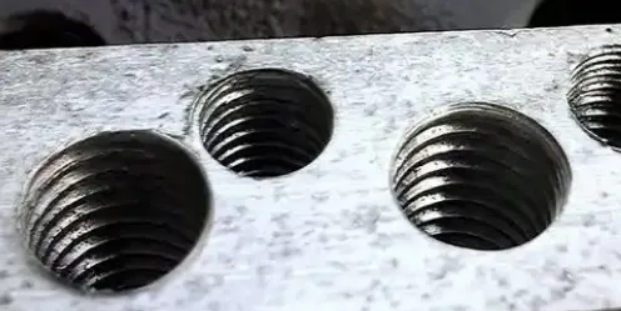Hot Keywords:
- All
- Product Name
- Product Keyword
- Product Model
- Product Summary
- Product Description
- Multi Field Search
Views: 2 Author: Site Editor Publish Time: 2024-12-09 Origin: Site
What's the difference between tapping and thread machining? We will explore the similarities and differences.

Threaded hole machining is the creation of holes with internal threads using thread cutting tools such as thread turning tools, thread milling cutters or with the aid of thread inserts. In engineering, fastening parts without threaded holes are incomplete. To improve speed and accuracy, threads are usually added during the CNC machining process. Thread machining is usually one of the final steps in manufacturing parts, especially when thread inserts are involved. Tapping is just one type of threaded hole machining. More specifically, it is the creation of threaded holes using taps. These tools consist of rods with sharp edges or teeth that can cut into the sides of the hole, forming internal helical grooves (threads) while cutting the material. Tapping is a quick and convenient method of thread machining and is also one of the most common techniques we see in hardware stores. In short, tapping is a type of threaded hole machining, but it's not the only method.
Comparison between Tapping and Thread Machining
As mentioned above, tapping is a thread machining method for creating internal threads in holes. Thread machining is a general term used to describe the creation of internal or external threads using various types of cutting tools. You can tap threads on holes or bores to create internal threads, but you can also tap threads on external cylindrical features to create threaded rods or fasteners. External threads can be completed using cutting dies, single-point cutting tools on lathes, roll forming tools and so on.
Similarities and Limitations
The similarities between tapping and thread machining processes lie in the fact that they both create internal threads for threaded fasteners (such as bolts) to be installed into. They can also be used with blind holes or through holes. When a hole does not go completely through the workpiece, it is regarded as a blind hole. In terms of limitations, we will focus on the limitations of tapping since thread machining encompasses all other types of thread machining techniques. Here are the limitations to pay attention to:
·Thread Types: Tapping is limited to internal threads. For external threads, you will have to turn to other thread machining processes, such as using dies.
·Thread Varieties: Taps are designed to manufacture threads with specific sizes and pitches. This means that if you want to create various threads, you will need a corresponding tap for each thread. Moreover, this excludes custom thread forms, which can be better handled by processes such as thread milling.
·Tool Breakage: Taps are more prone to breakage than other thread cutting tools. Broken taps can be a nightmare for machinists as they are difficult to remove and, in some cases, may even require scrapping the entire part.
·Blind Hole Depth: Since most taps have a tapered lead to assist the cutting process, this means they can only go so deep before reaching the bottom of the blind hole. If you need the thread to be as close to the bottom of the blind hole as possible, you may need to adopt other methods, such as thread milling.
·Material Limitations: Taps don't work well when machining hard or brittle materials (such as hardened steel). These types of materials tend to wear out taps quickly, making it impossible to effectively produce good threads or requiring frequent tool changes, which increases costs. On the other hand, highly ductile materials can also cause problems for taps as they may become "sticky" and stick to the taps during the cutting process, requiring frequent cleaning or tool replacement.
Overall, tapping can be a good way to machine threaded holes on parts under appropriate circumstances, but when dealing with certain materials and thread forms or when you want to reduce the risk of tool breakage, you may need to adopt other techniques.